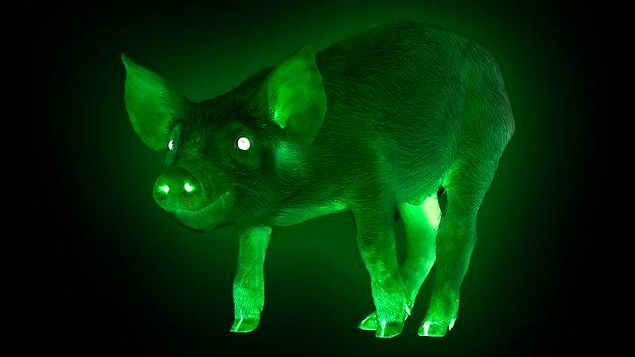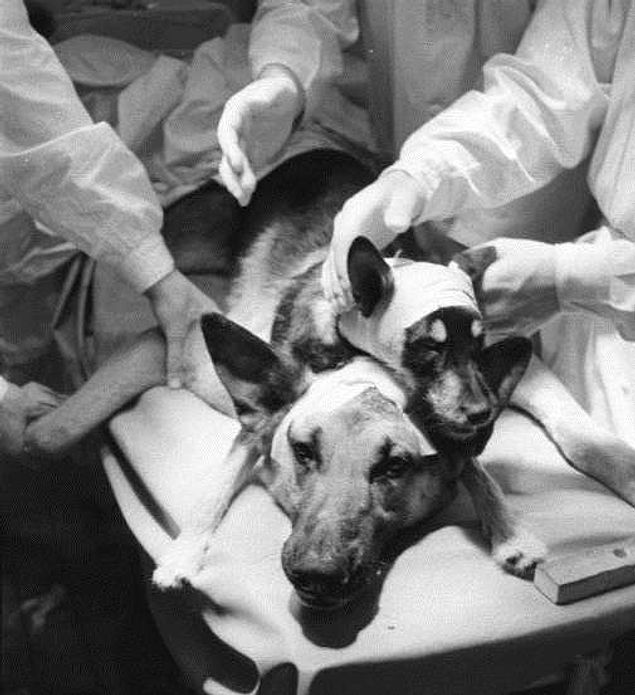Strangest but Successful Science Experiment.

Ready to be amazed, entertained and shocked by these 5 Strangest but Successful Experiment
By the time we reach college age, most of us are aware that real scientists are nothing like their movie counterparts. There’s a lot less wild hair, while bad German accents and screams of “it lives!” are few and far between. However, not so long ago, the line between real life and fiction was much more blurred.
While most of these experiments seemed logical, a few bordered on the downright insane. Some were so mind-bogglingly weird that we can’t help but ask, “What on Earth were they thinking?
Throughout history, scientists have experimented with animals in their quest for knowledge. While most of these experiments seemed logical, a few bordered on the downright insane. Some were so mind-bogglingly weird that we can’t help but ask, “What on Earth were they thinking?”
5. Glow-In-The-Dark Pigs

From chickens and tobacco plants to rats, many animals had been genetically mutated to glow in the dark, but the weirdest one was the pigs .In 2006, National Taiwan University's Department of Animal Science and Technology added genetic information from jellyfish into pig embryos.The result was three pigs that glowed in the dark with a fluorescent green light. But not just their skins: the scientists said their organs glowed!
The
method sees animal embryos injected with DNA from a jellyfish and was
used to create the world's first glow-in-the-dark rabbits in Turkey
earlier this year.
The Turkish team was now working on a glowing sheep.
But all the fluorescent fauna isn't just for fun. The goal is to introduce beneficial genes into larger animals to create less costly and more efficient medicines.
The green colour indicates that the fluorescent genetic material injected into the pig embryos has been incorporated into the animal's natural make-up.
The Turkish team was now working on a glowing sheep.
But all the fluorescent fauna isn't just for fun. The goal is to introduce beneficial genes into larger animals to create less costly and more efficient medicines.
The green colour indicates that the fluorescent genetic material injected into the pig embryos has been incorporated into the animal's natural make-up.
"It's
just a marker to show that we can take a gene that was not originally
present in the animal and now exists in it," Dr Stefan Moisyadi, from
the University of Hawaii, explained.
The animals were not affected by the fluorescent protein and would have the same life span as other pigs, he said.
"The green is only a marker to show that it's working easily," he said
The ultimate goal of the research is
to introduce beneficial genes into larger animals to create less costly
and more efficient medicines. "The green is only a marker to show that it's working easily," he said
'[For] patients who suffer from haemophilia and need the blood-clotting enzymes in their blood, we can make those enzymes a lot cheaper in animals rather than a factory that will cost millions of dollars to build,' Dr Moisyadi explained.
The Institute for Biogenesis Research at the John A. Burns School of Medicine focuses on reproductive research. Its aims to continue to improve human in vitro fertilization techniques.
4. The Soviet Surgeon And His Two-Headed Dog

Born in 1918, just after the Russian Revolution, Vladimir Demikhov was a Soviet scientist who experimented with transplants on animals from the 1930s until the 1960s. Although he is now regarded as somewhat of a pioneer, his grisly experiments on dogs have left a stain on his reputation. Most notable were his attempts to graft two dogs together.
Calling Soviet doctor Vladimir Demikhov a mad scientist may be undercutting his contributions to the world of medicine, but some of his radical experiments certainly fit the title. Case in point — though it may seem like myth, propaganda, or a case of photoshopped history — in the 1950s, Vladimir Demikhov actually created a two-headed dog.
His operation sewed the forearms and head of small 9-year-old dog named Shavka to a larger stray dog called Brodyaga, which translates to “Tramp.” The operation involved severing the jugular vein, the aorta, and spinal column of Shavka, then linking her circulatory system to Brodyaga's body.
The two heads could eat and drink separately, although both canines died four days later. Nonetheless, Demikhov attempted this experiment dozens and dozens of times on different subjects.
Reporting on this story in 1959 with a fair dose of skepticism and fear, Life Magazine said: “The Russians who created the two-head dog are now considering a human transplant: putting a new leg on a woman who lost her own.” It isn't believed this operation went ahead. However, in his time, Demikhov did also carry out transplants.
3. Disembodied Dog Head

Ever since the carnage of the French Revolution, when the guillotine sent thousands of severed heads tumbling into baskets, scientists had wondered whether it would be possible to keep a head alive apart from its body, but it wasn't until the late 1920s that someone managed to pull off this feat.
Soviet physician Sergei Brukhonenko developed a primitive heart-lung machine he called an "autojector," and with this device he succeeded in keeping the severed head of a dog alive. He displayed one of his living dog heads in 1928 before an international audience of scientists at the Third Congress of Physiologists of the USSR. To prove that the head lying on the table really was alive, he showed that it reacted to stimuli. Brukhonenko banged a hammer on the table, and the head flinched. He shone light in its eyes, and the eyes blinked. He even fed the head a piece of cheese, which promptly popped out the esophageal tube on the other end.
Brukhonenko's severed dog head became the talk of Europe and inspired the playwright George Bernard Shaw to muse, "I am even tempted to have my own head cut off so that I can continue to dictate plays and books without being bothered by illness, without having to dress and undress, without having to eat, without having anything else to do other than to produce masterpieces of dramatic art and literature."
2. Unit 731

The country’s national archives passed on the names of 3,607 people in response to a request by Katsuo Nishiyama, a professor at Shiga University of Medical Science, in a move that could reignite the public debate over Japanese atrocities committed in occupied China before and during the second world war.
“This is the first time that an official document showing the real names of almost all members of Unit 731 has been disclosed,” Nishiyama told the Mainichi Shimbun newspaper. “The list is important evidence that supports testimony by those involved. Its discovery will be a major step toward unveiling concealed facts.”
1. Kevin Warick: Cyborg

To this end, Warwick had a chip implanted in his arm that allowed him to control small, mostly uncool things around his home. He could turn on lights and open doors. Basically the kind of shit having at least one finger will allow you to do now, but lazier.

A couple years later, a more advanced chip was linked to his nervous system to the end of using it to control a robot arm. In a fun PR stunt, they implanted a similar device in Warwick's wife and the two of them engaged in the "first purely electronic communication experiment between the nervous systems of two humans" acro
Throughout history, scientists have experimented with animals in their quest for knowledge. While most of these experiments seemed logical, a few bordered on the downright insane. Some were so mind-bogglingly weird that we can’t help but ask, “What on Earth were they thinking?”
Throughout history, scientists have experimented with animals in their quest for knowledge. While most of these experiments seemed logical, a few bordered on the downright insane. Some were so mind-bogglingly weird that we can’t help but ask, “What on Earth were they thinking?”
Throughout history, scientists have experimented with animals in their quest for knowledge. While most of these experiments seemed logical, a few bordered on the downright insane. Some were so mind-bogglingly weird that we can’t help but ask, “What on Earth were they thinking?”
Throughout history, scientists have experimented with animals in their quest for knowledge. While most of these experiments seemed logical, a few bordered on the downright insane. Some were so mind-bogglingly weird that we can’t help but ask, “What on Earth were they thinking?”
ss the internet, whatever the hell that means. We suspect file sharing of porn was involved.
